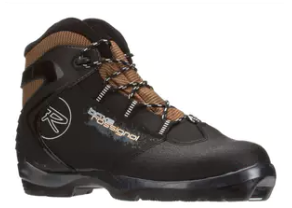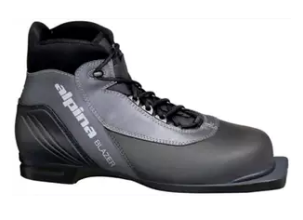| Five Winds Backcountry Ski & Snowshoe Club Discover the Muskoka Wilderness |
- Home
- Ski/Snowshoe 🆕
- Ski Equipment
Ski Equipment
Skis
 |
In recent years, backcountry equipment has changed quite a bit but those old wooden skis that may be collecting dust in your parents/grandparents basement may still work. Many members still use them, especially in cold powder snow conditions.
Ski widths: Backcountry ski width range varies from about 59 mm to 99 mm. If you already own skis for trackset skiing, slightly narrower can still work for you in most conditions. Many people ski with skis in the backcountry without using more specialized skis. Narrow racing skis, 44-46 mm width would be challenging. Skate skis will not work at all. You want to have stability and flotation, not speed.
Ski lengths: It will be based on your ski width, height and weight. If your skis are on the wider end of the spectrum, then your skis can be shorter. e.g. If a person is skiing on skis in the lower width range at 180 cm , they could use a 170 cm or less on the higher width range skis. Very few of our members use skis longer than 205-210 cm. Those long skis just simply are difficult to maneuver on our trail system.
Metal edges: Nice to have especially in icy conditions, side stepping, and can help you better control your skis while snow plowing with less effort or technique. Your skis will be a little heavier.
Waxable or Waxless:
Waxable skis can have better glide but grip can be lacking at times if the proper wax is not applied. You do have to spend the time to wax your skis dependent on the temperatures, and it could vary throughout the day, so you may need to re-apply wax.
Waxless skis have become the overwhelming norm for most skiers because they are effective in most conditions of southern Ontario. Waxless skis have less glide than their waxable counterparts in colder conditions.
What kind of waxless skis? In recent years, waxless cross country skis with permanent "skins" in the grip zone have become the norm. They perform very well in tracks, in hard-packed snow, and particularly on smooth ice. For these reasons, they have largely replaced waxless skis with scales in track ski situations. However, waxless skis with skins do not grip well in powder snow. So for this reason, most waxless skis used backcountry conditions still use scales, which do grip in powder. If you wish to use waxless skis with skins, it is recommended that you bring grip wax appropriate to the temperatures and apply it beyond the skis' grip zone in case the skins do not give you sufficient grip.
Some members own two sets for different conditions (waxable skis when conditions are cold; waxless (scaled) when you're near the zero mark or above), while others just use one pair all the time. Many of our members who are now in the market for a new pair of skis, are now going to the wider skis for easier maneuverability because you can have shorter ski lengths. We usually spend some time off-trail as many of the groups like to bushwhack at times. The short fatter skis also make it easier to "break trail" especially if you're trying to ski with 1 or 2 feet of fresh snow.
Boots & Bindings
| Boots: Ideally, boots for backcountry skiing should be like hiking boots, with more support, more height, and rigidity. Boots may be classified as a classic cross-country ski boot or light touring. |   |
Bindings: This is dependent on the boots you buy, three-pin, New Nordic Norm (NNN) system, Salomon system.
Poles
| Poles: Shoulder–height or somewhat shorter. Poles should have metal tips so that you can dig into ice if need be. Avoid poles with racing-style small baskets. Larger baskets are better. If your poles have small baskets, then your pole could sink three feet down when you plant it in soft snow. The old bamboo poles work well. |  |

